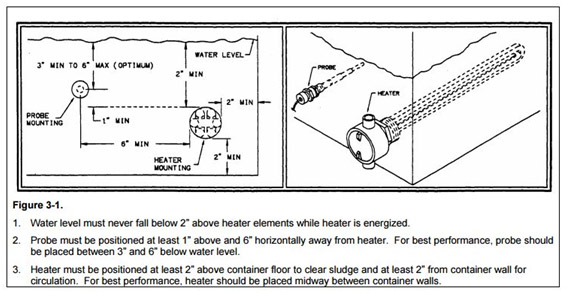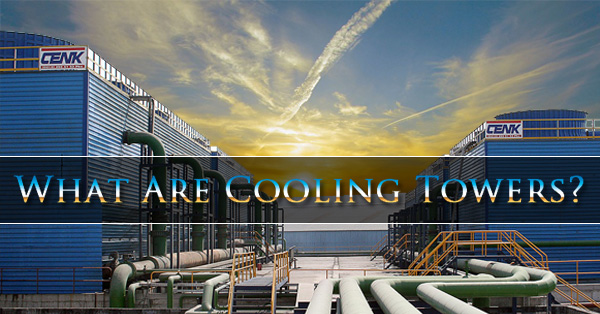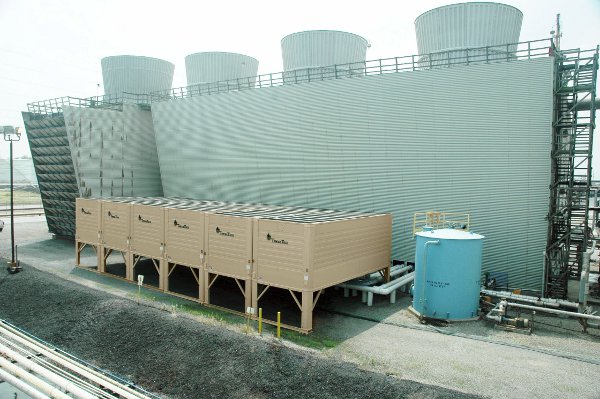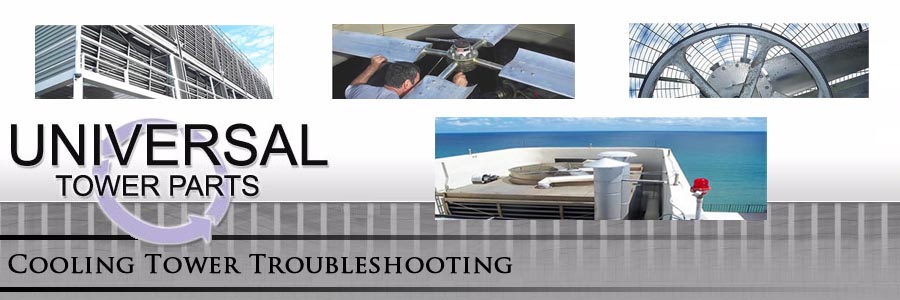
If you’re searching “cooling tower troubleshooting” chances are you’ve got a problem with your industrial or HVAC cooling tower and need to solve it quickly. This guide should help you troubleshoot your cooling tower’s problem and help you understand what is needed to bring it back online or improve its performance.
It is no surprise that the applications from the technology of cooling towers has been benefiting industries, power plants, the processing plants of natural gas, refineries, and also, the commercial HVAC systems, all the way to the early 19th century. A cooling tower is merely a heat changer or rather a heat rejection device. A rejection device that brings water and air in contact with one another solely for the purpose of making the temperature of the water go down.
Regardless of how easy it is to understand the concept of operating a cooling tower, which is water interacting with mere air, it still has to be cared for with regular and proper maintenance just like any other type of machinery, that is, if you expect to get the optimal performance out of it. Also, as with any other machinery, problems can occur, which will need to be troubleshooted, and repairs may be required.
Below is a list of several problems that could occur, including possible solutions.
Different ways to troubleshoot cooling tower problems:
There are various causes, conditions, signs, and warnings that you can use to effectively troubleshoot your cooling towers. Take a look below to see if any of these signs or symptoms match up with the problems your system is experiencing.
The water temperature rises unexpectedly
- The amount of air flow that is recommended could be too low. The blade level being adjusted could correct the problem.
- Your water flow could be over the recommended level. Correct the rate of flow.
- If your sprinkler is putting out a poor distribution, the sprinkler output could be impeded. It may require the sprinkler or feed to be replaced.
- The water flow was designed to make contact with the files, but this is not happening. Need to check the water supply for leaks, also, check for any issues the sprinkler may be having.
- The external air flow going around the tower may be impeded. To find out you need to look for any obstructions of air, and check to see if the exhaust air is being recycled.
- The fill is checked or coated. it needs to be cleaned, and might need a replacement.
There is excessive vibration or noise
- Check out the motor bearing. It may only need to be greased, if so, grease it. It may need to be replaced, if so, replace it.
- Perhaps the fan mount has become loose. If it appears to have loosened up, re-tighten the fan mount.
- There may be different tower components coming in contact with one another. Make sure to maintain the proper tolerances.
- It may have an unbalanced fan. You will need to have it re-balanced.
- The fans blocks could be loose. You will need to have them re-tightened when its necessary.
- The hub mounting on the motor shaft could be loose. They are going to need to be tightened back up, which may require the use of shims.
The cooling capacity has lowered unexpectedly
- First, check and make sure that the motor is still running. If it is not, test the fuse to see it is still good, the switch capacity has to be correctly set, and make sure that the contact switch is still working, that it is clean, and that it is still adjusted at the recommended settings.
- Check to see if the fan is still spinning, if not, it could be a jammed bearing. If a bearing was jammed, clear that out of the way and replace bearing.
- Should the motor’s RPM suddenly go down, the first thing to do is to see if the starter is working properly. The second thing to do, is to make sure there is not an electrical overload. For the last thing to do, check to see if your supply voltage is in the range it should be. If it is not within the accepted range give your electrical company a call.
- Should you not be able to get the motors RPM up to an acceptable level, you will need to check the starter and find out if it is still serviceable and if all of the connections are clean and tight, and connected in the correct matter. If everything mentioned checks out, it will be necessary to check and see if the motor windings are damaged.
The water carries over the specified level
- Make sure that the filter to the water flow has not been blocked. If it has been blocked it will need to be unblocked.
- Should the water sprinkler seem to be rotating faster than usual, or more than is specified, you will need to adjust its speed and angle.
- Be sure that the sprinkler does not go higher than it should over the filter. If it is, it will need to be lowered to the recommended range.
The water conductivity is not within the acceptable range
- Check the probe to the controller and be sure that it is clean. If it is not, use a clean cloth to clean it, avoiding contact with your fingers.
- Make sure that the solenoid is not clogged up with debris, keeping it from being able to close all the way, which may cause it to bleed. Making sure that the water level stays within the recommended specifications you will need to be sure that the float is in a place to make this happen.
- You need to make sure that the cooling tower system is free of leaks.
- Always make sure to properly prime the chemical feed pump.
- Make sure that the water conductivity is always in an acceptable range by adjusting the chemical feed pump.
The motor temperature is too high
- Look and see if there has been a drop in the voltage, also checking the fan to make sure it is still balanced, and be sure the stator does not touch the rotor.
The water flow is reduced below specification
- Check to make sure that none of the waters distribution pipes have been obstructed or clogged.
- Make sure that the strainer/filter has not been obstructed.
- Make sure that the water pump does not have any faults which would keep it from operating properly.
There is an unexpected water loss
- Make sure that the sprinklers RPM is at the recommended range.
- Make sure that no end caps have been compromised.
- Check to see if any of the FRP/PVC eliminators have been incorrectly placed.
The troubleshooting tips given should help regardless if your facility uses a counter flow, cross flow, induced draft, or another kind of cooling tower, the basic troubleshooting problems will get you pointed in the right direction.
Cooling Tower Part Sales
Many times after you have found the problem with your cooling tower you will need replacement parts such as nozzles, drift eliminators, fill media, fans, motors, or a wide range of other replacement cooling tower parts. We also supply cooling tower owners with quality cooling tower coatings that help guard the cooling tower’s condition and extend its life. Universal Tower Parts is proud to offer high quality parts to extend the serviceable life of cooling towers across the country. Give us a call today to find the right replacement parts for your brand of cooling tower.

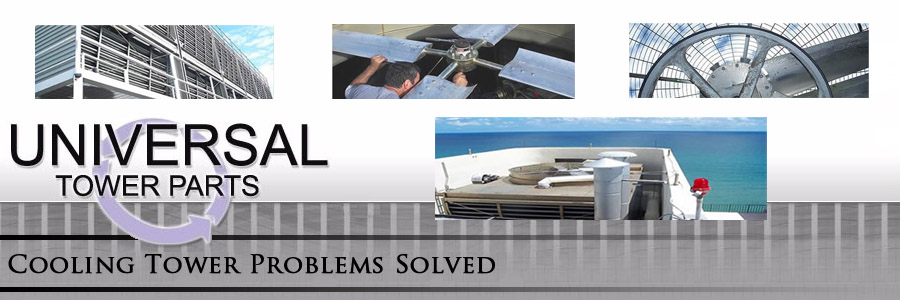
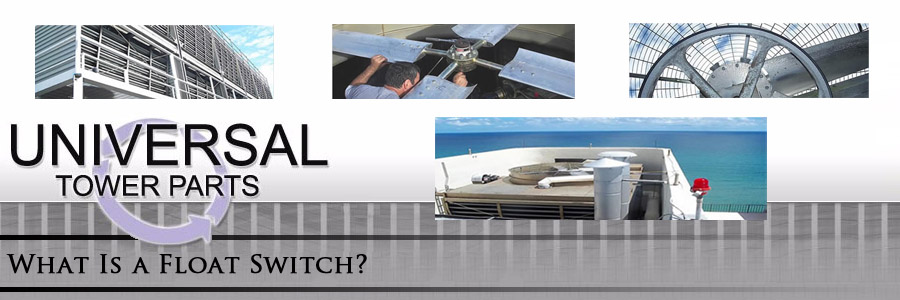
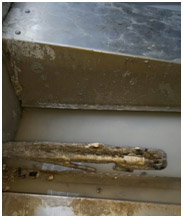 This Immersion heater (shown left) was buried in basin sludge and failed due to over-heating. Unfortunately, the cause of failure was not discovered until the basin was cleaned and the problem “uncovered”
This Immersion heater (shown left) was buried in basin sludge and failed due to over-heating. Unfortunately, the cause of failure was not discovered until the basin was cleaned and the problem “uncovered”